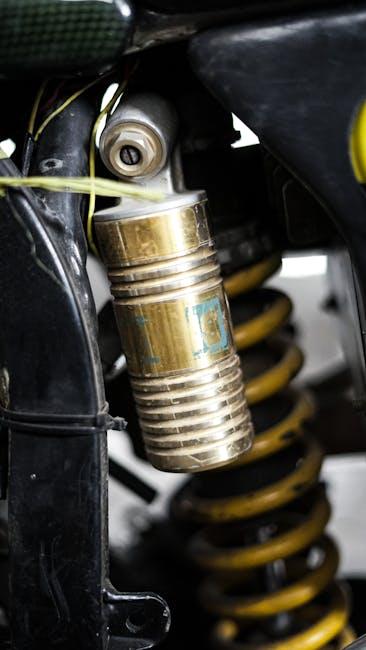Beneath the smooth glide of every journey lies a hidden guardian working tirelessly—the suspension system. Often overlooked, this crucial network of springs, shocks, and linkages bears the brunt of every bump, dip, and turn, transforming a rough road into a comfortable ride. Maintaining your suspension system isn’t just about comfort; it’s about safety, control, and prolonging the life of your vehicle. In this article, we’ll explore practical tips and expert insights to help you keep your suspension in top shape, ensuring every drive feels steady, secure, and smooth.
Table of Contents
- Understanding the Components of Your Suspension System
- Signs Your Suspension Needs Attention
- Routine Inspection Tips for Optimal Performance
- Choosing the Right Replacement Parts and Fluids
- Effective DIY Maintenance Techniques
- When to Seek Professional Suspension Service
- Q&A
- In Retrospect
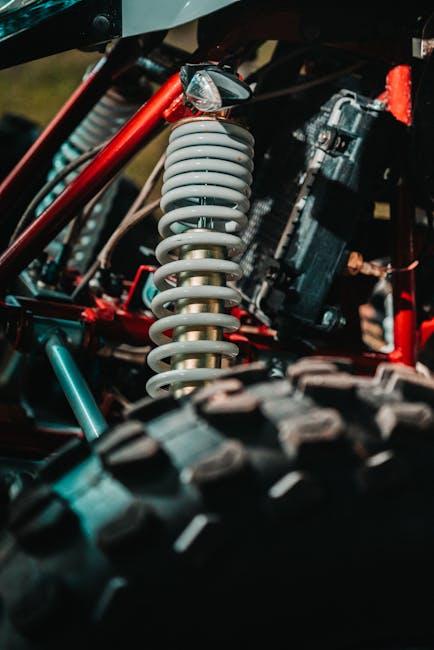
Understanding the Components of Your Suspension System
Your vehicle’s suspension system is a complex assembly that plays a crucial role in ensuring a smooth and safe ride. At its core, this system consists of several key components working in harmony, including shock absorbers, struts, springs, control arms, and bushings. Shock absorbers and struts act as the system’s dampers, absorbing the impact from bumps and potholes to maintain tire contact with the road. Springs, often coil or leaf types, support the vehicle’s weight and control ride height, while control arms and bushings keep your wheels aligned and responsive to steering inputs.
Understanding these parts helps you recognize potential issues before they escalate. For instance, worn shock absorbers can cause excessive bouncing, while damaged bushings may lead to erratic handling. Below is a quick overview of key suspension elements and their functions:
| Component | Primary Function | Signs of Wear |
|---|---|---|
| Shock Absorbers | Dampen vibrations and impacts | Bouncing, uneven tire wear |
| Springs | Support vehicle weight and absorb shocks | Sagging, reduced ride height |
| Control Arms | Maintain wheel alignment and motion | Steering instability, clunking noises |
| Bushings | Reduce vibrations and cushion joints | Excessive noise, vibration |

Signs Your Suspension Needs Attention
Recognizing when your suspension system requires care is crucial to maintaining a smooth ride and ensuring safety on the road. One of the earliest indicators is a noticeable change in how your vehicle handles—such as excessive bouncing or swaying when navigating turns or bumps. Uneven tire wear and unusual noises like clunks or squeaks while driving can also signal that components like shock absorbers or struts are compromised. Pay special attention if your car dips excessively when braking or if you feel vibrations through the steering wheel, both of which hint at potential suspension issues.
Here are some common signs to monitor:
- Excessive bouncing: After hitting a bump, the vehicle continues to oscillate instead of settling quickly.
- Uneven tire wear: Tires wearing out faster on one edge can indicate misalignment caused by suspension problems.
- Pulling to one side: The car drifts left or right even on smooth roads.
- Clunking noises: Sounds from the suspension area during acceleration, braking, or turning.
| Symptom | Possible Cause |
|---|---|
| Vehicle leans to one side | Worn or broken coil spring |
| Harsh ride over small bumps | Damaged shock absorbers |
| Steering wheel vibration | Loose or damaged suspension parts |
| Uneven tire tread | Alignment issues due to suspension wear |
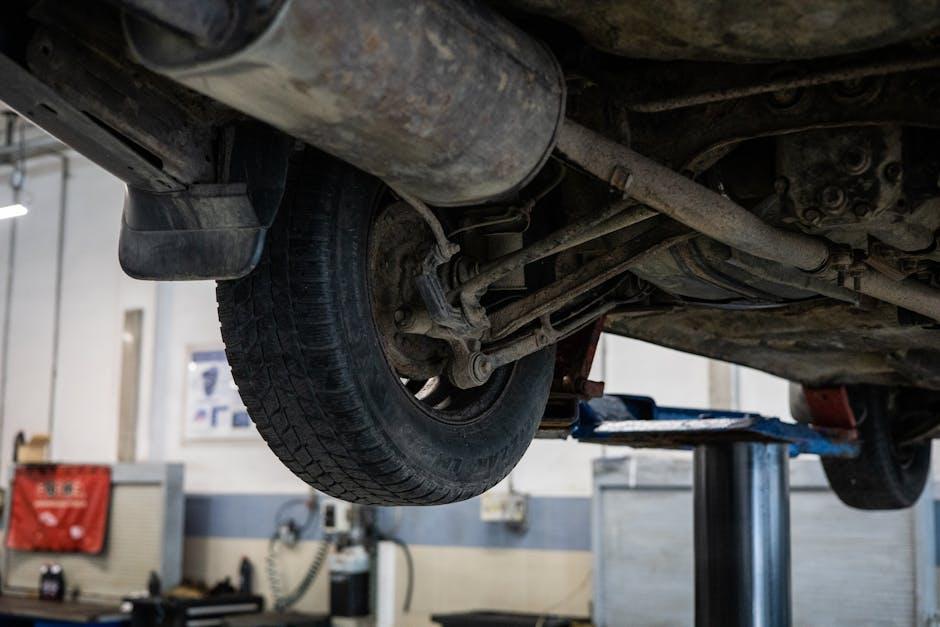
Routine Inspection Tips for Optimal Performance
Regularly examining key components can dramatically extend the life of your suspension system. Begin with a visual check for any leaks in shock absorbers or struts, as visible fluid indicates compromised seals. Also, look for uneven tire wear patterns which might suggest alignment issues or worn suspension parts. Keeping an eye on bushings, ball joints, and tie rods for cracks or looseness can prevent unexpected breakdowns during your daily drive.
Establish a consistent inspection routine by using this simple checklist:
- Check ride height symmetry on both sides
- Inspect shocks and struts for damage or leakage
- Test for unusual noises during suspension travel
- Examine tires for irregular wear or bald spots
- Verify proper torque on suspension bolts and nuts
Additionally, take advantage of the following quick reference table to identify common suspension issues and their impacts:
| Issue | Symptom | Suggested Action |
|---|---|---|
| Worn Shock Absorbers | Bumpy ride, excessive bounce | Replace shocks/struts |
| Broken Coil Springs | Lower ride height, uneven stance | Change springs immediately |
| Loose Ball Joints | Steering play, clunking noise | Tighten or replace joints |
| Damaged Bushings | Vibration, poor handling | Replace worn bushings |
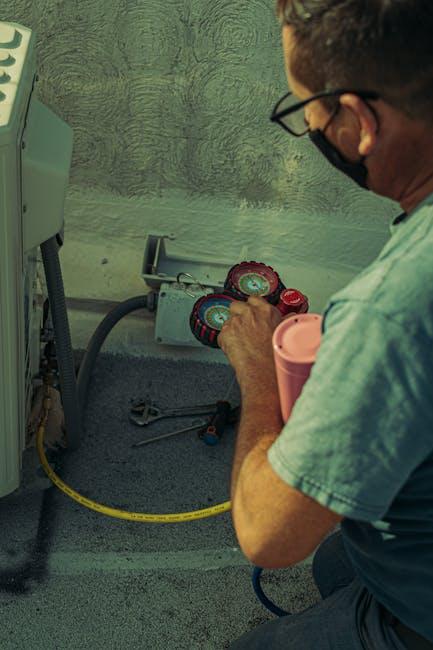
Choosing the Right Replacement Parts and Fluids
Selecting the right components for your suspension overhaul is crucial for both safety and performance. Opt for parts that match your vehicle’s specific make and model, as using incompatible components can lead to uneven wear and diminished ride quality. Prioritize OEM (Original Equipment Manufacturer) parts when possible because they guarantee compatibility and durability. Additionally, consider the conditions you typically drive in; for off-road use, for instance, reinforced or heavy-duty parts might be necessary, while everyday urban driving often requires standard replacements.
For fluids, quality and specification are everything. Always refer to the manufacturer’s guidelines for shock absorber oils or hydraulic fluids, since the viscosity and chemical composition directly affect the suspension’s responsiveness and lifespan. Below is a quick reference table highlighting common part types and recommended fluid grades:
| Suspension Part | Recommended Fluid Type | Notes |
|---|---|---|
| Shock Absorber | SAE 10W-30 Hydraulic Oil | Maintains smooth damping action |
| Strut Assembly | OEMSpec Hydraulic Fluid | Ensures proper rebound and compression |
| Ball Joints & Bushings | High-Performance Grease | Reduces friction and wear |
When making your choices, it’s wise to invest in trusted brands to avoid premature failures, and always double-check the fluid’s shelf life and sealing before use. The right decision in replacement parts and fluids can transform your vehicle’s handling and extend the life of your suspension system significantly.
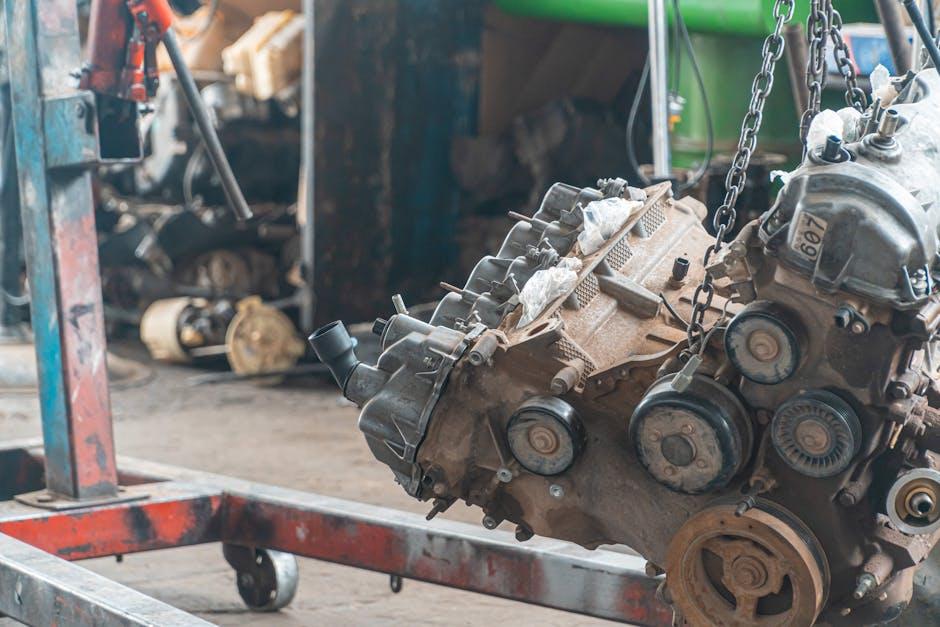
Effective DIY Maintenance Techniques
Maintaining your suspension system doesn’t have to be a mystery reserved only for mechanics. By implementing a few straightforward techniques, you can ensure your vehicle’s suspension performs optimally, offering a smoother ride and improved handling. Start by regularly inspecting key components such as shocks, struts, and bushings. Look for signs of wear like leaks, cracks, or unusual noises. Paying close attention to tire wear patterns can also serve as an early indicator of suspension issues.
Equipped with basic tools, you can perform routine maintenance tasks that prolong suspension life. Don’t forget to:
- Check and top up suspension fluid if applicable to your vehicle model.
- Clean and lubricate moving parts to prevent rust and friction.
- Ensure bolts and mounting points are properly tightened to manufacturer specifications.
| Suspension Part | DIY Maintenance Tip | Recommended Frequency |
|---|---|---|
| Shock Absorbers | Visual check for leaks and bounce test | Every 12,000 miles |
| Struts | Inspect for corrosion and noise | Every 15,000 miles |
| Bushings | Check for cracks and wear | Every 10,000 miles |
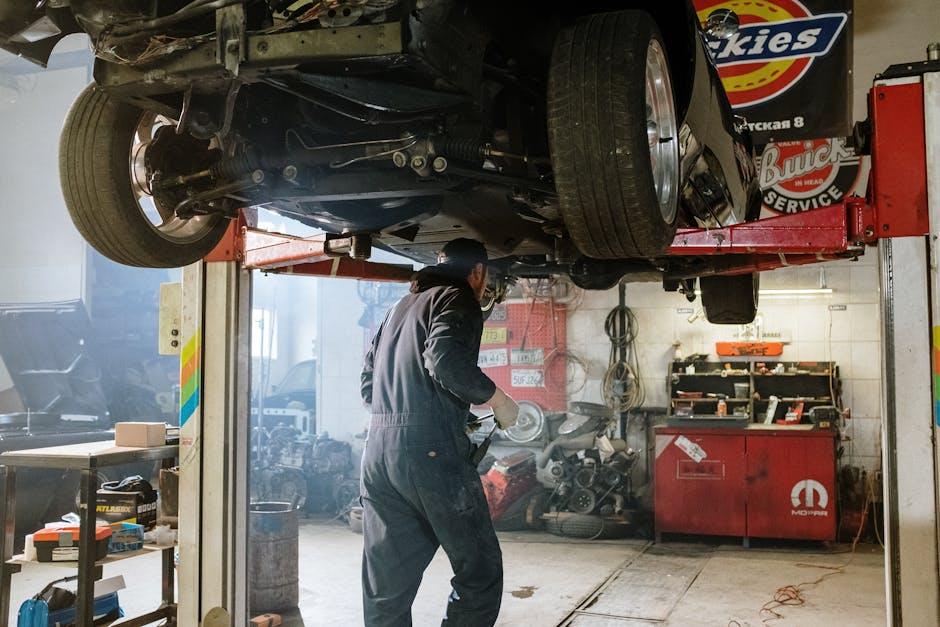
When to Seek Professional Suspension Service
Recognizing the moment when your suspension needs professional attention can save you from costly repairs and enhance your driving safety. If you experience persistent uneven tire wear, strange noises over bumps, or a noticeable decrease in ride comfort, these are clear signs that your suspension might be compromised. Additionally, if your steering starts to feel loose or your vehicle pulls to one side, it’s wise to have experts look under the hood. These symptoms often indicate worn-out components that require detailed inspection and specialized tools beyond typical DIY maintenance.
Routine checks are important, but certain scenarios demand an immediate call to a suspension specialist. Consider seeking professional service if you notice:
- Visible leaking shocks or struts
- Excessive bouncing after hitting a pothole
- Unusual vibrations during driving
- Sudden changes in ride height
Ignoring these warnings can jeopardize vehicle performance and safety. Professionals not only diagnose and repair faults but can also recommend advanced suspension upgrades tailored to your driving needs.
Q&A
Q: Why is maintaining my suspension system important?
A: Your suspension system is the unsung hero of your vehicle, quietly ensuring a smooth ride, optimal handling, and safety. Proper maintenance prevents premature wear, improves comfort, and protects other vital components from damage.
Q: How often should I check my suspension system?
A: Think of your suspension like your car’s posture—it should be assessed regularly. Ideally, have it inspected every 12,000 miles or at least once a year. If you notice unusual noises or handling issues, check it sooner.
Q: What are common signs that my suspension needs attention?
A: Listen and observe. Excessive bouncing, uneven tire wear, nose-diving during braking, a pulling sensation to one side, or clunking noises over bumps are red flags begging for a suspension check.
Q: Can I maintain my suspension system myself, or should I see a professional?
A: Basic visual inspections and checking tire pressures are doable at home, but suspension components are complex and often require specialized tools. For repairs or replacements, it’s wise to consult a professional.
Q: What routine tips can help keep my suspension in top shape?
A: Stay smooth on the roads by avoiding potholes, reduce heavy loads, rotate your tires regularly, and keep an eye on shock absorbers, struts, and bushings during inspections. Small preventive steps can save big repair bills.
Q: How do worn shocks and struts affect my driving?
A: When shocks and struts wear out, your ride can become rough, your vehicle harder to control, and stopping distances longer. This compromises both comfort and safety, turning everyday drives into potential hazards.
Q: Does wheel alignment impact suspension maintenance?
A: Absolutely! Misaligned wheels stress suspension parts unevenly, leading to accelerated wear and poor handling. Regular alignments help your suspension last longer and maintain vehicle stability.
Q: Are there any suspension upgrades that can improve vehicle longevity?
A: Upgrading to high-quality shocks, struts, or coilovers designed for your driving style can enhance performance and durability. Just ensure compatibility and professional installation to avoid unintended issues.
Q: What role does tire maintenance play in suspension health?
A: Tires are the first line of defense in absorbing road impacts. Keeping them properly inflated and regularly rotated reduces stress on suspension components and promotes even wear.
Q: How can I prepare my suspension for harsh weather or challenging terrains?
A: Before facing rough roads or winter conditions, inspect for wear, tighten any loose components, and consider installing heavy-duty suspension parts if you frequently drive in demanding environments. This proactive care keeps your system resilient.
In Retrospect
Maintaining your suspension system is more than just a routine task—it’s a crucial investment in your vehicle’s safety, comfort, and performance. By staying proactive with regular inspections, timely repairs, and mindful driving habits, you ensure every journey is smooth and secure. Remember, a well-maintained suspension isn’t just about avoiding costly fixes; it’s about preserving the harmony between your car and the road. So, take the time to care for this vital system, and your vehicle will reward you with reliability mile after mile.
